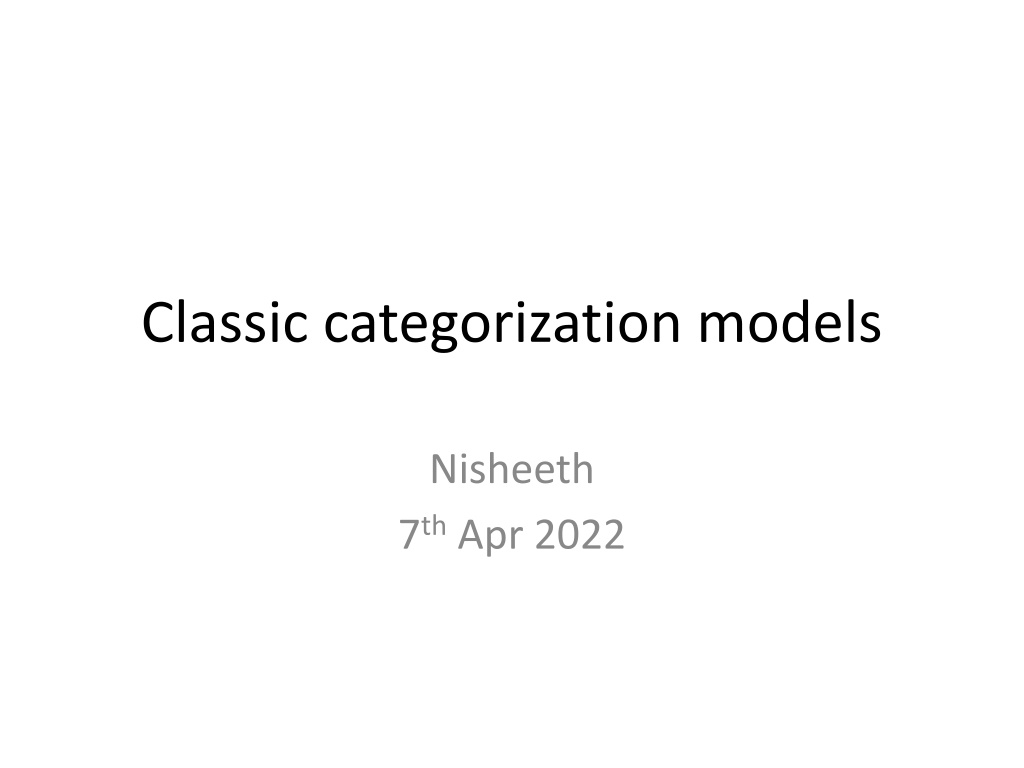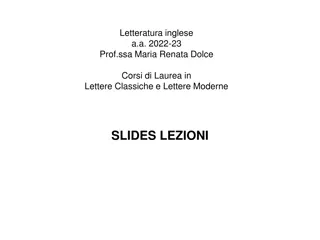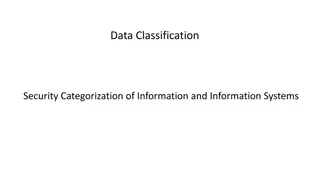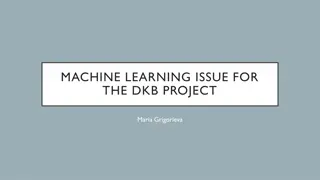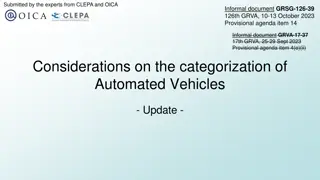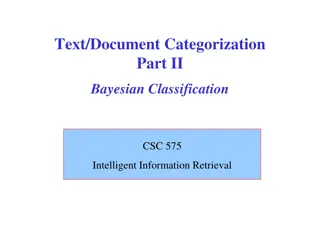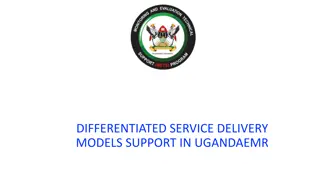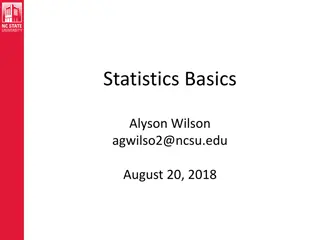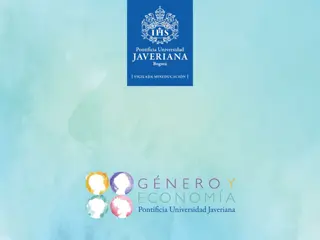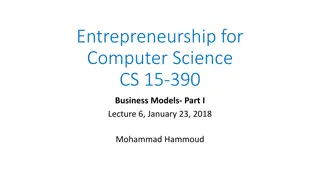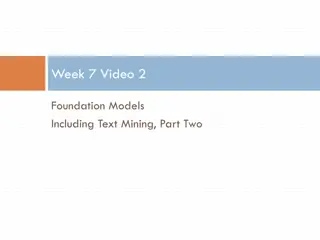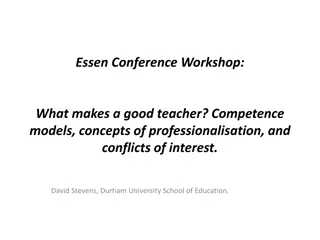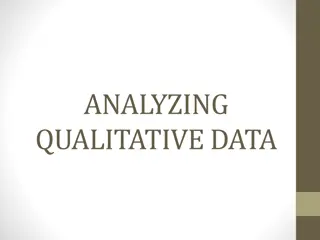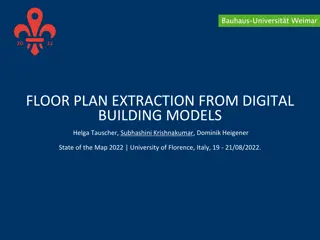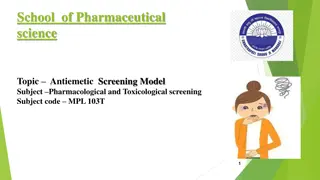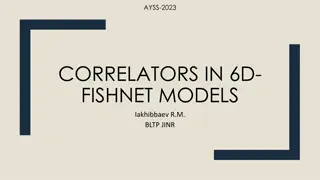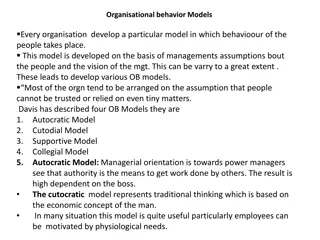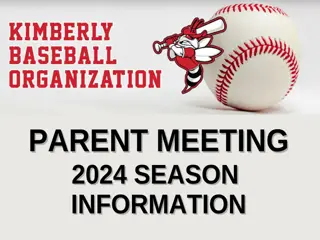Exploring the Organization of Concepts in Categorization Models
Understanding the functions and structures of categorization models in cognitive processes. From hierarchical structures to preferred levels of conceptualization, learn about the basic level, superordinate level, and subordinate level of categorization. Discover the significance of the basic level in shaping language acquisition and predictive accuracy in cognitive tasks. Explore how expertise influences categorization levels and representations of conceptual knowledge.
Download Presentation

Please find below an Image/Link to download the presentation.
The content on the website is provided AS IS for your information and personal use only. It may not be sold, licensed, or shared on other websites without obtaining consent from the author. Download presentation by click this link. If you encounter any issues during the download, it is possible that the publisher has removed the file from their server.
E N D
Presentation Transcript
Classic categorization models Nisheeth 7thApr 2022
Functions of Concepts By dividing the world into classes of things to decrease the amount of information we need to learn, perceive, remember, and recognise: cognitive economy They permit us to make accurate predictions Categorization serves a communication purpose
Outline Hierarchical Structure Is there a preferred level of conceptualization? Organization of Concepts classical view: defining-attribute approach prototype theory exemplar models Semantic similarity Query likelihood model
Is there a preferred level of conceptualization? car_beetle01_lg grannysmith
Superordinate level Superordinate Furniture Preferred level BASIC LEVEL Basic Chair Subordinate level Subordinate Windsor
Whats special about the basic level 1) most abstract level at which objects have similar shapes
Whats special about the basic level 2) development First words are learned at the basic level (e.g., doggy, car, ball) 3) Language natural level at which objects are named languages first acquire basic level terms
most general maximize accuracy maximize accuracy little predictive power little predictive power BASIC maximize predictive power maximize predictive power little accuracy little accuracy most specific
Basic Level and Expertise 820 800 Expert Novice 780 RT 760 740 720 superordinate basic subordinate Level of Categorization
Representation of Conceptual Knowledge How do we represent concepts? How do we classify items? CLASSICAL VIEW concepts can be defined in terms of singly necessary and jointly sufficient features singly necessary: every instance of the concept must have that property jointly sufficient: every entity having all those features must be an instance of the concept
Problems with Classical View Bachelor: unmarried, male, adult ?
What is a game? Ludwig Wittgenstein (1953) proposed that games could not be defined or categorized by features. Rather, any game shares some family resemblance to some (but not all) other games.
Prototype and Exemplar Models A new exemplar is classified based on its similarity to a stored category representation Types of representation prototype exemplar
Prototypes Representations Central Tendency P Learning involves abstracting a set of prototypes
Typicality Effects typical robin-bird, dog-mammal, book-reading, diamond- precious stone atypical ostrich-bird, whale-mammal, poem-reading, turquoise-precious stone
Is this a cat? Is this a chair ? Is this a dog ?
Graded Structure Typical items are similar to a prototype Typicality effects are naturally predicted atypical P typical
Classification of Prototype Prototype are often easy to classify and remember Even if the prototype is never seen during learning Posner & Keele DEMO: http://psiexp.ss.uci.edu/research/teaching/Posner_Keele_Demo.ppt Prototype Small Distortion Medium Distortion Large Distortion
Problem with Prototype Models All information about individual exemplars is lost category size variability of the exemplars correlations among attributes (e.g., only small birds sing)
Exemplar model category representation consists of storage of a number of category members New exemplars are compared to known exemplars most similar item will influence classification the most 24043 siamese dog ?? cat dog Caramel%2520Tabby%2520Point%2520Siamese cat dog cat dog cat
Exemplar Models Model can explain Prototype classification effects Prototype is similar to most exemplars from a category Graded typicality How many exemplars is new item similar to? Effects of variability pizzas and rulers Overall, compared to prototype models, exemplar models better explain data from categorization experiments (Storms et al., 2000)
Sample exemplar model Nosofsky s 1986 Generalized Context Model (GCM) has been very influential Stimuli stored in memory as combinations of features Context for a feature are the other features with which it co-occurs Assumes that stimuli are points in interval- scaled multidimensional space
GCM similarity function Compute psychological distance between memory exemplar x and stimulus y as Alpha are attention weights Similarity is calculated as Note: Distance function is always greater than zero Use abs outside the summation if necessary
Category response in GCM Exemplars vote for the category with which they are associated N(R,x) is the count of the number of times x has been recorded as being in category R before Gamma is a response bias parameter Equation is basically counting total votes cast for category R by exemplars divided by total votes cast
What do the parameters do? Gamma reflects environmental priors on categorization Beta reflects the bias-variance tradeoff in similarity judgments What does alpha do? Reflects the role of semantic knowledge in categorization
Knowledge-based Views Murphy (2002, p. 183): Neither prototype nor exemplar models have attempted to account for knowledge effects . . . The problem is that these models start from a kind of tabula rasa [blank slate] representation, and concept representations are built up solely by experience with exemplars.
Effect of Knowledge on Concept Learning Concept learning experiment involving two categories of children s drawings Two learning conditions: neutral labels for categories (Group 1 vs. Group 2 children) Category labels induced use of background knowledge: Creative and non-creative children created category A and B drawings respectively Note: same stimuli are used in both conditions Palmeri & Blalock (2000)
By manipulating the meaningfulness of the labels applied to those categories of drawings, subjects classified new drawings in markedly different ways. E.g., neutral labels led to an emphasis of concrete features. The creative vs. non-creative labels led to an emphasis of abstract features Background knowledge and empirical information about instances closely interact during category learning Palmeri & Blalock (2000)
Learning an exemplar model from labels Original GCM model had no learning Parameters fit to data Basically just a clustering model (unsupervised) Later models offer learning mechanisms Kruschke s ALCOVE model (1992) Assumes a supervised learning setting Learner predicts categories Teacher teaches true category
Supervised learning in ALCOVE Activation of category k given stimulus y Training loss function Where t is a training label that is 1 if the predicted response is correct and 0 otherwise
Optimization using gradient descent All weights and parameters are learned using gradient descent Weight update Exemplar-wise error Attention update
Variations GCM-class models assume the presence of interval- scaled psychological distances Can make different assumptions about similarity function, e.g. categorical instead of continuous scale # of matches # of mismatches # matches - # mismatches Can make different assumptions about the learning mechanism Anderson s Rational Model of Categorization We will see this next
